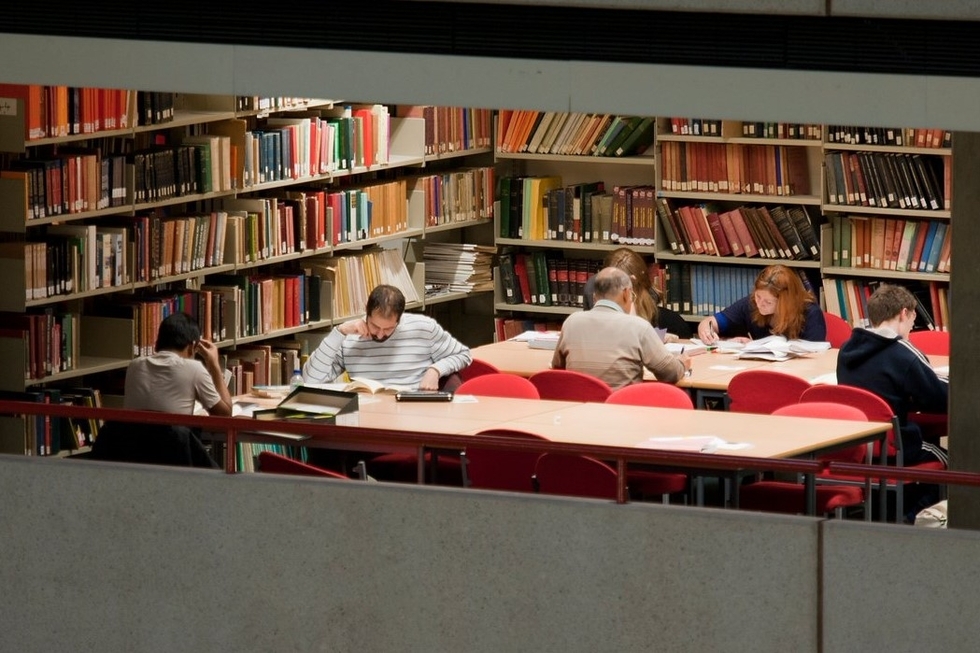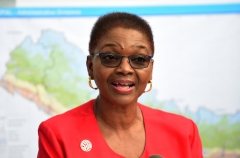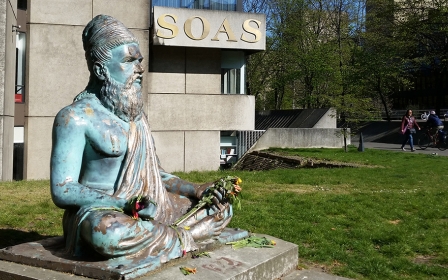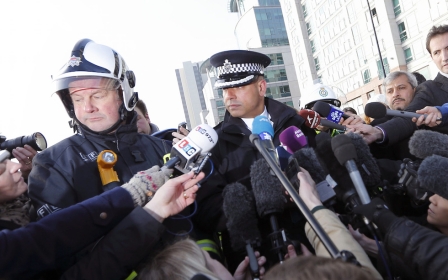What SOAS furore reveals about shadowy work of Prevent

Recent discussions about the implementation of the Prevent agenda at the School of Oriental and African Studies (SOAS) raise a series of important issues about the nature of the policy and the way it is being implemented - both in our universities and beyond.
Prevent agenda
Indeed, what has been striking is the difficulty of establishing what exactly has been going on. SOAS vice chancellor, and former Blair associate during the war in Iraq, Valerie Amos, appeared to be claiming that SOAS had not participated in the Prevent agenda but that it was coming under increasing pressure to do so.
Yet when asked, SOAS stated that no official pressure was being applied at all.
Furthermore, students and staff members, who were approached by Middle East Eye had a very different take on matters. They all confirmed that SOAS was complying with Prevent, had done so in as limited a way as possible, and was increasingly pressured by HEFCE - the official university funding body - to implement harsher and more draconian policies.
Implementation of Prevent is not a legal obligation as such, but institutions are being effectively coerced by extra-legal bodies to implement a so-called voluntary policy
This story, beyond exposing some of the details of how Prevent functions, highlights crucial details of how the government's so-called anti-radicalisation programme functions. This is particularly important because of two factors.
Since 2011, universities have been targeted as a prime concern for the government's counter-extremism policy. In addition, the Counter Terrorism and Security Act, passed in 2015, made so-called "safeguarding" (that is reporting on imagined radicalisation) a legal duty for all civil servants.
Given that Prevent functions on the assumptions that thoughts and ideas, rather than criminal actions, should be policed and kept under surveillance, education as a hotbed for the exchange and challenging of ideas becomes a key area of focus.
In the shadows
In this context, the recent focus on SOAS sheds light on a series of important aspects of the way Prevent operates in universities, and therefore also in general.
Firstly, it is striking that Prevent works in the shadows. It functions outside of the public eye and is dependent on blurring its own edges. Indeed, it is striking that SOAS management is able to both declare that it is complying with the Counter Terrorism and Security Act 2015 (CTSA), and assure people that it is not implementing Prevent.
This lack of clarity is not solely down to shortcomings in the honesty of managers at SOAS. It sheds light on the way Prevent functions as a disciplining tool exactly because it is unclear where and how it is implemented.
The knowledge of the CTSA, and by extension of Prevent, is enough to serve as pressure on staff and students to police themselves to think twice about their contributions in class, course material, or organised events.
The fact that it remains constantly unclear whether SOAS management is snooping on them, or how, strengthens this tendency by blurring the lines of what is acceptable and what isn't, and creates an atmosphere of worry, suspicion, as well as normalisation of the new order.
Between legality and financial coercion
Secondly, it is striking that Prevent is being enforced in a space between legality and financial coercion. On the one hand, the CTSA makes "safeguarding" a legal obligation. On the other, Prevent remains a "voluntary scheme" - although the consequences of refusing to participate in de-radicalisation training remain unclear.
It is therefore technically possible for universities to do the first without complying with the second.
It seems that at first this was the position of SOAS and other universities in 2015. They simply considered that they had enough existing processes in place to cater for vulnerable students.
However, through bodies such as HEFCE for universities, Ofsted for schools, or the Charity Commission for students' unions, so-called "good practice" is established and effectively imposed on institutions.
This then allows HEFCE to come back to SOAS the next year and tell them that their existing approaches are no longer sufficient, that there is new "best practice" in the industry, and that therefore it will need to either catch up or face losing its funding or accreditation.
The same happens with students' unions under the pressure of the Charity Commission.
A kafkaesque situation
The implementation is, therefore, not a legal obligation as such, but institutions are being effectively coerced by extra-legal bodies to implement a so-called voluntary policy.
It is clear that the whole system has a total lack of accountability. The government can continue to claim that they are not forcing anybody to implement anything. Managers can say that they have no choice if they want to keep running their institutions.
And bodies such as HEFCE or the Charity Commission are not democratically elected and therefore difficult to hold to account. The logic is further maintained through regular witchhunts in the media, which put additional pressure on managers and institutions.
Students and staff are, therefore, stuck in a kafkaesque situation where no one is in charge, nothing is obligatory, and there is nowhere to appeal - yet our spaces of learning, the trust relations between students and staff, and the basic tenets of academic freedom are being undermined.
All the while we are told repeatedly that free speech on campuses is at risk because of the open, public, and democratic campaigns run by Palestine solidarity activists, feminists and anti-racists.
The lack of clarity of Valerie Amos should not give us the impression that she is an innocent cog in a broader machine, just trying to do the best she can. It is in fact part and parcel of the policy, and she is playing her part strikingly well.
- Malia Bouattia is an activist, the former President of the National Union of Students, co-founder of the Students not Suspects/Educators not Informants Network and presenter/panelist on British Muslim TV's Women Like Us.
The views expressed in this article belong to the author and do not necessarily reflect the editorial policy of Middle East Eye.
Photo: SOAS library (Twitter/screen grab)
Middle East Eye propose une couverture et une analyse indépendantes et incomparables du Moyen-Orient, de l’Afrique du Nord et d’autres régions du monde. Pour en savoir plus sur la reprise de ce contenu et les frais qui s’appliquent, veuillez remplir ce formulaire [en anglais]. Pour en savoir plus sur MEE, cliquez ici [en anglais].







